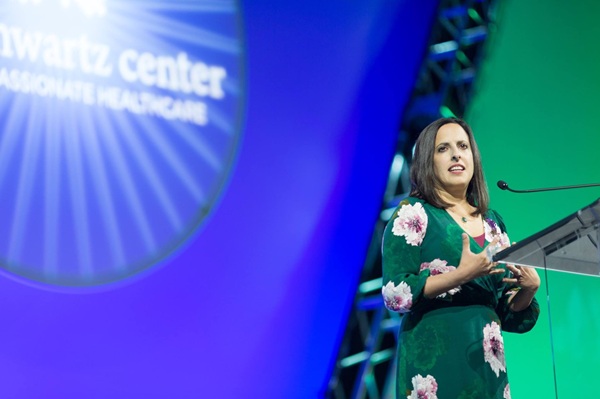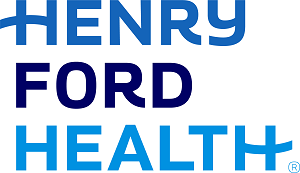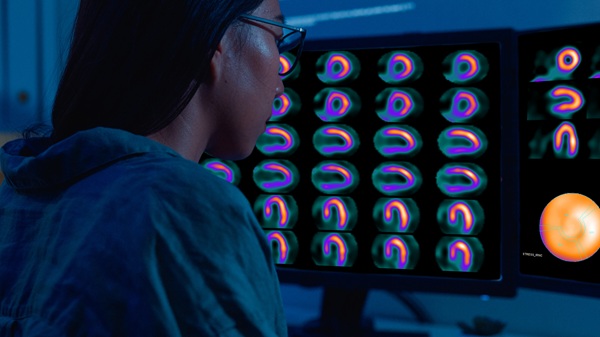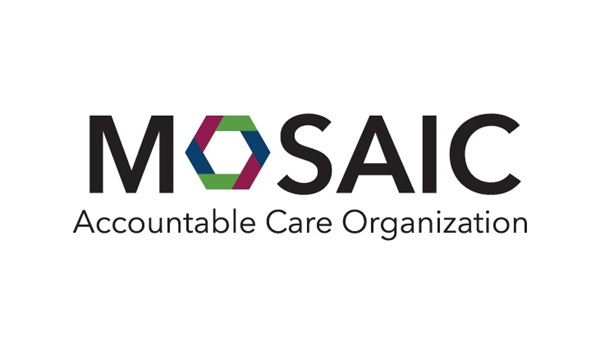Low-Intensity Electric Fields Applied to Scalp Can Stop, Slow Growth of Tumor Cells in Newly-Diagnosed Glioblastoma
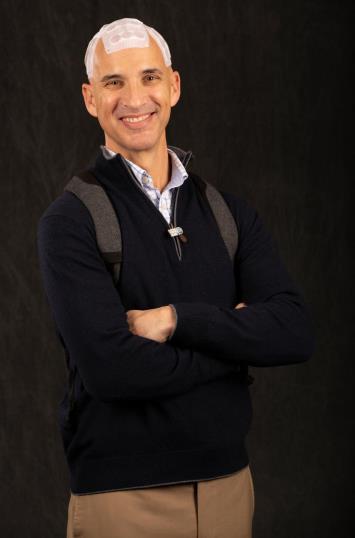
DETROIT – Henry Ford Cancer Institute is one of the few cancer programs in Southeast Michigan fighting the most common and deadly brain cancer with tumor-treatment fields, a low-intensity alternating electric field applied with a wearable device that stops or slows the growth of tumor cells in patients with newly diagnosed glioblastoma (GBM). The FDA-approved Optune® device generates electronic tumor-treating fields – a unique approach that garners hope and debates skepticism. For GBM patient Gill Doyle, the device has become a focal point for optimism.
“We are focusing on the newest, cutting-edge science and bringing the technology along with precision medicine to our patients,” says Tobias Walbert, M.D., director of neuro-oncology at the Henry Ford Cancer Institute. “Our goal is to translate the research we do in clinical trials to patient care in real time.” Henry Ford was part of the initial clinical trial that led to the FDA approval of the device.
In 2017, 48-year-old Doyle was diagnosed with GBM. Having 24 years of experience working for a chemotherapy pharmaceutical company, Doyle knew the reputation of hospitals in Southern Michigan. He chose Henry Ford for his brain surgery and subsequent treatment.
“That’s the hospital you want to go to if you have brain cancer. They do more recruiting for brain trials, and they’re a leader in brain cancer,” says Doyle, a father of four who lives in Canton with his wife.
The National Cancer Institute estimates that 22,850 adults (12,630 men and 10,280 women) were diagnosed with brain and other nervous system cancer in 2015. The Institute also reports that in 2015, an estimated 15,320 of these diagnoses resulted in death.
Previous research has shown that the combination of surgery, chemotherapy (temozolomide) and radiation can give patients only a 5-10 percent chance of survival after five years. Until recently, there have been few additional treatments for the disease.
“This is a complex and aggressive tumor,” says Dr. Walbert. “We have to keep an open mind and try new treatments and approaches.”
Optune creates low-intensity, electric tumor-treating fields. To deliver the fields, four transducer patches are applied to the scalp and connected to the battery-operated device. The low frequency current is thought to disrupt cell division in the tumor and may stop or slow the growth of cancer cells. In some cases, the tumor-treating fields may kill cancer cells.
In a recent clinical trial published in JAMA that lead to FDA approval of the device for patients using Optune and temozolomide, the median overall survival was 20.9 months compared to 16 months for patients who used only the medication. At 24 months, the annual survival rate was 43 percent for patients using Optune compared to 29 percent for those who used only chemotherapy. While chemotherapy gave patients approximately five extra months to live, and the addition of tumor treatment fields provided another five months of life.
Patients must wear the device 80 percent of the time, even while they sleep. The device is attached to a nearly three-pound battery pack carried over the shoulder, or plugged into an electrical outlet. Every two days, the head has to be shaved. “That can be very challenging, especially for female patients,” says Dr. Walbert. “Patient participation and family support are big factors for treatment success.”
“For the year I’ve been wearing the device, my compliance has been 96 percent, and I’m on my way to 97 percent,” says Doyle. “I have had so much love and support from friends and family. Life has been fantastic.”
In September 2018, Doyle ran alongside his daughter and Dr. Walbert in the 5K Head for the Cure race in Detroit. The previous year, he wasn’t medically cleared to run, so he walked.
“His ability to adapt and embrace the treatment has certainly made a big difference,” says Dr. Walbert.
Doyle receives an MRI scan every eight weeks; and at this time, he is not completely free of cancer. He jokes that he has to keep going – tuition payments are due each month at a college, high school, and elementary school for his four kids. To encourage other GBM patients using the device, Doyle acts as an ambassador for the device manufacturer.
“Wearing the device 24/7 gives you a constant reminder about the cancer, but most patients’ goal in life is to forget about the cancer. It’s not for everyone,” says Dr. Walbert. He was part of an analysis that studied patients’ quality of life and found that it remained stable while using the device. However, he says the study did not account for patients who decided not to use it.
Therapy involving tumor-treating fields has had a skeptical reception in the neuro-oncology community because it is still not fully understood how this treatment approach works. “If there is something that works in clinical trials and increases survival or quality of life, we need to embrace it and make sure our patients know about it,” says Dr. Walbert.
Also, the most common critique is that the clinical trial did not include patients who received a sham or placebo device – one that was not activated or was set to an ineffective frequency. Dr. Walbert says additional devices were costly, and the manufacturer considered it unethical for some cancer patients to use a device that wasn’t working.
“As we receive more immediate feedback from patients, the device will be further improved,” says Dr. Walbert. While achieving those improvements will take time, Dr. Walbert is optimistic that this technology is one possible approach – together with new surgical techniques, precision medicine and new therapies using modified viruses or the immune system – to make a meaningful impact on patients battling GBM.
# # #
MEDIA CONTACT: Jeff Adkins, (586) 307-2027, jadkins6@hfhs.org
.svg?iar=0&hash=F6049510E33E4E6D8196C26CCC0A64A4)

/hfh-logo-main--white.svg?iar=0&hash=ED491CBFADFB7670FAE94559C98D7798)

